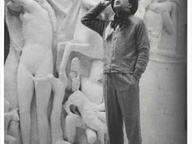56. Esposizione Internazionale d’Arte. All the World’s Futures
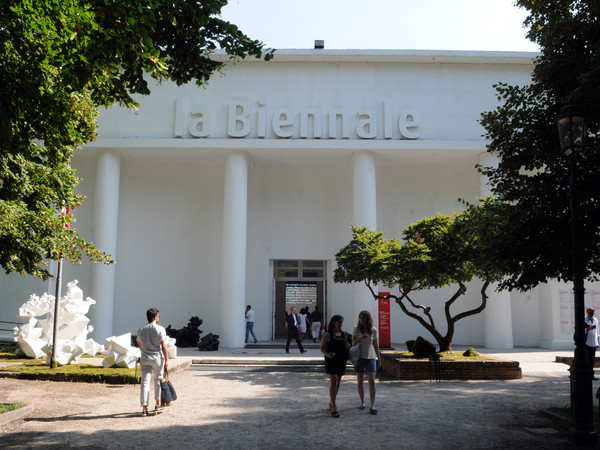
56. Esposizione Internazionale d'Arte, Venezia, padiglione centrale ai Giardini
Dal 9 May 2015 al 22 November 2015
Venezia
Luogo: Giardini e Arsenale
Indirizzo: Giardini e Arsenale
Curatori: Okwui Enwezor
Telefono per informazioni: +39 041 5218711
E-Mail info: info@labiennale.org
Sito ufficiale: http://www.labiennale.org
Sarà aperta al pubblico fino a domenica 22 novembre 2015, ai Giardini della Biennale e all’Arsenale, la 56. Esposizione Internazionale d’Arte dal titolo All the World’s Futures, diretta da Okwui Enwezor e organizzata dalla Biennale di Venezia presieduta da Paolo Baratta.
La Mostra è affiancata da 89 partecipazioni nazionali negli storici Padiglioni ai Giardini, all’Arsenale e nel centro storico di Venezia. Sono 5 i paesi presenti per la prima volta : Grenada, Mauritius, Mongolia, Repubblica del Mozambico, Repubblica delle Seychelles. Altri paesi partecipano quest’anno dopo una lunga assenza: Ecuador (1966, poi con l’IILA), Filippine (1964), Guatemala (1954, poi con l’IILA).
Anche quest’anno la Santa Sede parteciperà con una mostra allestita nelle Sale d’Armi, in quegli spazi che la Biennale ha restaurato per essere destinati a padiglioni durevoli.
Il Padiglione Italia in Arsenale, organizzato dal Ministero per i Beni e le Attività Culturali con la PaBAAC - Direzione Generale per il paesaggio, le belle arti, l’architettura e l’arte contemporanee - sarà curato quest’anno da Vincenzo Trione.
Saranno 44 gli Eventi Collaterali ufficiali ammessi dal curatore e promossi da enti e istituzioni internazionali, che allestiranno le loro mostre e le loro iniziative in vari luoghi della città.
La Mostra Internazionale
La mostra All the World’s Future's formerà un unico percorso espositivo che si articolerà dal Padiglione Centrale (Giardini) all’Arsenale, includendo 136 artisti dei quali 89 presenti per la prima volta, provenienti da 53 paesi. 159 sono le nuove produzioni realizzate per questa edizione.
“La Biennale che compie 120 anni procede, e anno dopo anno continua a costruire anche la propria storia, che è fatta di molti ricordi, ma in particolare di un lungo susseguirsi di diversi punti di osservazione del fenomeno della creazione artistica nel contemporaneo”. Così Paolo Baratta introduce l’edizione di quest’anno, ricordando che “Bice Curiger ci portò il tema della percezione e Massimiliano Gioni fu interessato al fenomeno della creazione artistica dall’interno, alle forze interiori che spingono l’artista a creare.”
“Oggi il mondo ci appare attraversato da gravi fratture e lacerazioni, da forti asimmetrie e da incertezze sulle prospettive. Nonostante i colossali progressi nelle conoscenze e nelle tecnologie, viviamo una sorta di "age of anxiety". E la Biennale torna a osservare il rapporto tra l'arte e lo sviluppo della realtà umana, sociale, politica, nell'incalzare delle forze e dei fenomeni esterni. Si vuole quindi indagare in che modo le tensioni del mondo esterno sollecitano le sensibilità, le energie vitali ed espressive degli artisti, i loro desideri, i moti dell’animo (il loro inner song). La Biennale ha chiamato Okwui Enwezor - spiega Baratta - anche per la sua particolar e sensibilità a questi aspetti.”
“Curiger, Gioni, Enwezor: quasi una trilogia – sintetizza il Presidente - tre capitoli di una ricerca della Biennale di Venezia sui riferimenti utili per formulare giudizi estetici sull’arte contemporanea, questione ‘critica’ dopo la fine delle avanguardie e dell’arte ‘non arte’.”
“Okwui non pretende di dare giudizi o esprimere una predizione, ma vuole convocare le arti e gli artisti da tutte le parti del mondo e da diverse discipline: un Parlamento delle Forme. Una mostra globale dove noi possiamo interrogare, o quanto meno ascoltare gli artisti pro venienti da 53 paesi, e molti da varie aree geografiche che ci ostiniamo a chiamare periferiche. Questo ci aiuterà anche ad aggiornarci sulla geografia e sui percorsi degli artisti di oggi, materia questa che sarà oggetto di un progetto speciale: quello relativo ai Curric ula degli artisti operanti nel mondo. Un Parlamento dunque per una Biennale di varia e intensa vitalità.”
“Quello che si espone in Biennale ha come fondale 120 anni di storia delle arti, i cui frammenti sono in ogni angolo e di varia natura, visto che l’i stituzione opera nell'Arte, nell'Architettura, nella Danza, nel Teatro, nella Musica e nel Cinema. (...) È il luogo delle "immagini dialettiche", per usare l'espressione di Walter Benjamin.”
“E sono ancora una volta lieto – conclude Baratta - di non aver ascoltato le tristi considerazioni di chi nel 1998 mi diceva che la mostra con padiglioni stranieri era outmoded e che andava eliminata, magari mettendo al suo posto un cubo bianco, uno spazio asettico nel quale esercitare la nostra astratta pr esunzione, o per dare ospitalità alla dittatura del mercato. Proprio la nostra articolata e complessa realtà ci aiuta a evitare questi pericoli. La grande montagna dei frammenti della nostra storia cresce ogni anno. A fronte sta la ancor maggiore montagna di quel che non fu mostrato nelle Biennali del passato.”
Il progetto della mostra è così articolato:
L’ARENA
Nel 1974 la Biennale di Venezia, a seguito di un’importante riforma dell’istituzione e di una revisione dello Statuto e delle proprie direttive, lanciò un progetto ambizioso senza precedenti, un piano quadriennale di eventi e attività. Una parte dei programmi del 1974 fu dedicata al Cile; la Biennale si espose quindi attivamente con un gesto di solidarietà verso quel paese nel periodo immediatamente seguente il violento colpo di stato con cui, nel 1973, il governo di Salvador Allende era stato rovesciato dal generale Augusto Pinochet. Gli eventi della Biennale Arte del 1974, che coinvolsero artisti di ambiti diversi – arti visive, cinema, musica, teatro, danza, performance – furono dislocati in tutta la città di Venezia. Questo capitolo significativo che ha modificato la storia della Biennale è oggi quasi dimenticato.
Quel programma di eventi dedicato al Cile e contro il fascismo incide la nostra recente memoria come una tra le più esplicite prese di posizione con cui un’esposizione della statura della Biennale Arte abbia non solo reagito, ma abbia anche coraggiosamente tentato di condividere il proprio palcoscenico storico con il contesto po litico e sociale contemporaneo. È superfluo osservare che, nell’inquietudine dell’attuale scenario internazionale, gli Eventi della Biennale del 1974 sono stati una fonte d’ispirazione per la Mostra di quest’anno.
In risposta a quell’episodio così significativo e alla ricca documentazione che aveva gener ato, la 56. Esposizione Internazionale d’Arte: All the World’s Futures presenta ARENA, uno spazio attivo nel Padiglione Centrale dei Giardini dedicato a una continua programmazione interdisciplinare dal vivo. Il cardine di questo programma sarà l’imponente lettura dal vivo dei tre volumi di Das Kapital di Karl Marx (Il Capitale). Das Kapital diventerà una sorta di Oratorio : per i sette mesi di apertura dell’Esposizione la lettura dal vivo sarà un appuntamento che si svolgerà senza soluzione di continuità.
Concepita dal premiato architetto ghanese - britannico David Adjaye, l’ARENA fungerà da luogo di raccolta della parola parlata, dell’arte del canto, dei recital, delle proiezioni di film, e diventerà il foro delle pubbliche discussioni. Prendendo spunto dal rito sikh dell’Akhand Path (una recitazione ininterrotta del libr o sacro per la quale si alternano più lettori nell’arco di diversi giorni), Das Kapital sarà letto da attori come un testo drammaturgico, con la regia dell’artista e regista Isaac Julien , per tutta la durata della Biennale Arte.
Sulla scia del concetto di “Vitalità: sulla durata epica”, la Biennale Arte ha commissionato agli artisti diverse nuove partiture e performance presentate nell’ARENA in un’analoga modalità – senza soluzione di continuità. Qui è particolarmente approfondito il concetto di canto, e la possibilità offerta dalla voce di essere lo strumento che scandisce il ritmo di una narrazione.
Olaf Nicolai ha preparato una nuova performance, ispirata alla innovativa composizione in due parti di Luigi Nono ( Un volto, e del mare / Non consumiamo Marx , per voce e nastro magnetico) e ai più recenti tentativi del compositore italiano di pronunciarsi criticamente e politicamente attraverso il medium della musica e ispirandosi per i propri brani alle poesie di Cesare Pavese, alle scritte sui muri di Parigi, e a voci registrate dal vivo e in modo casuale durante manifestazioni cittadine.
Joana Hadjithomas e Khalil Joreige presentano una performance quotidiana di lettura del loro libro d’artista Latent Images: Diary of a Photographer , che costituisce la terza parte del progetto Wonder Beirut e contiene sia testi sia trentotto lastre fotografiche, selezionate tra le centinaia di rullini mai sviluppati dal fotografo libanese Abdallah Farah tra il 1997 e il 2006.
Jason Moran, con il suo STAGED , mappa e approfondisce il tempo dei canti di lavoro nelle prigioni, nei campi, nelle case. In una campionatura dei canti di una prigione statale della Louisiana (Angola), il tempo varia da 57 a 190 battiti al minuto.
Jeremy Deller esplora il tema delle condizioni di vita e di lavoro nelle fabbriche, a partire dalla fine del XIX secolo e fino ai nostri giorni, basandosi su materiali d’archivio.
Charles Gaines presenta la sua nuova magistrale composizione originale per la 56. Biennale Arte, tratta dal corpus del suo lavoro più recente, Notes on Social Justice, una serie di disegni in grande scala di partiture musicali di canti.
Mathieu Kleyebe Abonnenc presenta alla Biennale Arte un memoriale temporaneo alla musica e alla personalità del musicista, cantante e straordinario compositore afroamericano Julius Eastman (1940 - 1990), il cui singolare e inimitabile contributo alla musica classica, contemporanea e d’avanguardia sarà esposto nell’ARENA per tutta la durata dell’ Esposizione.
The TOMORROW punta l’attenzione su Das Kapital, non solo come ambito astratto di apparati economici e logici, ma piuttosto come potenziale ricettacolo di storie e figure. Nella 56. Biennale Arte, the TOMORROW cerca di immaginare i personaggi e le figure che potrebbero utilizzare il repertorio di Marx nel contesto contemporaneo. Tales on Das Kapital è una ricerca che si propone di interpretare teatralmente il Capitale attraverso la partecipazione di soggetti non moderni. The TOMORROW organizza dei seminari, che si tengono nei weekend, con l’obiettivo di investigare la dimensione narrativa ed epica del testo di Marx.”
Le performance e le azioni dal vivo si sviluppano nel Padiglione Centrale attraverso l’ARENA, all’interno della Biblioteca della Biennale, dove è consultabile NOA (Not Only Arabic) di Mounira Al Solh , una rivista periodica in edizione limitata fondata nel 2008, per una consultazione individuale da concordare su appuntamento.
A collegare le due sedi principali della Mostra (Giardini e Arsenale) è Saâdane Afif con The Laguna’s Tribute: A Corner Speaker in Venice , performance che si sviluppa all’inizio di Via Garibaldi (lato Canal Grande). E' allestito uno speaker corner locale che presenta al pubblico letture e canta canzoni scritte da amici dell’artista.
Anche l’Arsenale è il palcoscenico di diverse performance, a cominciare dal nuovo progetto di Jennifer Allora e Guillermo Calzadilla , In the Midst of Things, che coinvolge un coro nell’interpretazione di un arrangiamento di Die Schöpfung (La Creazione) di Joseph Haydn.”
Le Corderie ospitano Theaster Gates con la sua nuova installazione multimediale Martyr Construction. L’opera affronta la questione del ripetuto smantellamento e della scomparsa di numerose chiese appartenenti a quartieri con etnie afroamericane e ispaniche in tutti gli Stati Uniti.
PRESENTAZIONI SPECIALI
Mentre il cardine di All the World’s Futures rimane un corpus assai ampio di nuove opere commissionate specificamente agli artisti per la 56. Biennale Arte – una selezione senza precedenti di progetti qui esposti per la prima volta – l’Esposizione dedica particolare attenzione anche a una rassegna di prospettive storiche realizzate d a artisti viventi e non. Queste rassegne, organizzate in forma di piccole antologie , spaziano da una serie di neon testuali – realizzata da Bruce Nauman tra il 1972 e l’inizio degli anni ’80 – a un atlante della filmografia di Harun Farocki che comprende complessivamente 87 film. La Biennale Arte presenta inoltre le opere di alcune figure magistrali, tra le quali ricordiamo il fotografo Walker Evans , con un set completo tratto dall’edizione originale di Let Us Now Praise Famous Men ; il cineasta Sergej Ejzenstejn ; l’artista multimediale Chris Marker ; l’installation artist Isa Genzken ; lo scultore - compositore Terry Adkins ; l’autore - regista Alexander Kluge ; l’installation artist Hans Haacke ; l’artista concettuale Teresa Burga ; il performance artist Fabio Mauri ; lo scultore Melvin Edwards ; la pittrice Marlene Dumas ; l’artista - attivista Inji Efflatoun ; il land artist Robert Smithson ; la pittrice Emily Kngwereye ; il regista Ousmane Sembène ; lo scultore Ricardo Brey ; l’artista concettuale Adrian Piper , e altri pittori come Tetsuya Ishida e Georg Baselitz.
Questa raccolta di pratiche artistiche provenienti da Africa, Asia, Australia, Europa, Nord e Sudamerica costituisce la ricerca di nuove connessioni nell’impegno con cui gli artisti indagano la condizione umana, o esplorano idee specifiche e aree di produzione all’interno della loro opera.
The Invisible Borders Trans - African Project è un’organizzazione fondata nel 2009 in Nigeria che riunisce artisti africani – soprattutto fotografi, scrittori e cineasti – con l’impegno e la passione del cambiamento sociale, per riflettere sulla questione delle frontiere e sulle implicazioni connesse nell’Africa del 21° secolo. Invisible Borders presenta alla 56. Esposizione il suo Trans - African Worldspace , una panoramica della produzione fotografica e audiovisiva più recente e attuale realizzata dalla piattaforma. Tale produzione è generata e inclusa nella presentazione con una cadenza regolare, durante i sette mesi di apertura dell’Esposizione. Inoltre, il gruppo presenta nell’ARENA il documentario Invisible Borders 2011, The Film.
Abounaddara è un collettivo anonimo di cineasti siriani che lavora su documentari estemporanei, altrimenti conosciuto come “cinema di emergenza”, e che ha riflettuto a lungo sul diritto all’ immagine. Il gruppo impiega un’estetica di disorientamento e do - it - yourself , autoproducendo i propri film e distribuendoli online per evitare la censura politica e i costrittivi dettami dell’industria dei media e dell’entertainment. Dalla sua fondazione, n el 2010, Abounaddara ha realizzato una serie di brevi documentari che celebrano la vita quotidiana della gente comune in Siria. In seguito alla sollevazione popolare del marzo 2011, il collettivo ha iniziato a produrre un breve film ogni venerdì, un’inizia tiva tuttora in corso, realizzata grazie a una rete di cineasti volontari che operano in segreto per motivi di sicurezza. Nell’ARENA della 56. Esposizione Abounaddara presenterà ogni venerdì, in prima rappresentazione, un’installazione video di una selezio ne di film tratti dall’ampio corpus dei lavori già realizzati dal collettivo e anche una nuova pellicola.
La Mostra è affiancata da 89 partecipazioni nazionali negli storici Padiglioni ai Giardini, all’Arsenale e nel centro storico di Venezia. Sono 5 i paesi presenti per la prima volta : Grenada, Mauritius, Mongolia, Repubblica del Mozambico, Repubblica delle Seychelles. Altri paesi partecipano quest’anno dopo una lunga assenza: Ecuador (1966, poi con l’IILA), Filippine (1964), Guatemala (1954, poi con l’IILA).
Anche quest’anno la Santa Sede parteciperà con una mostra allestita nelle Sale d’Armi, in quegli spazi che la Biennale ha restaurato per essere destinati a padiglioni durevoli.
Il Padiglione Italia in Arsenale, organizzato dal Ministero per i Beni e le Attività Culturali con la PaBAAC - Direzione Generale per il paesaggio, le belle arti, l’architettura e l’arte contemporanee - sarà curato quest’anno da Vincenzo Trione.
Saranno 44 gli Eventi Collaterali ufficiali ammessi dal curatore e promossi da enti e istituzioni internazionali, che allestiranno le loro mostre e le loro iniziative in vari luoghi della città.
La Mostra Internazionale
La mostra All the World’s Future's formerà un unico percorso espositivo che si articolerà dal Padiglione Centrale (Giardini) all’Arsenale, includendo 136 artisti dei quali 89 presenti per la prima volta, provenienti da 53 paesi. 159 sono le nuove produzioni realizzate per questa edizione.
“La Biennale che compie 120 anni procede, e anno dopo anno continua a costruire anche la propria storia, che è fatta di molti ricordi, ma in particolare di un lungo susseguirsi di diversi punti di osservazione del fenomeno della creazione artistica nel contemporaneo”. Così Paolo Baratta introduce l’edizione di quest’anno, ricordando che “Bice Curiger ci portò il tema della percezione e Massimiliano Gioni fu interessato al fenomeno della creazione artistica dall’interno, alle forze interiori che spingono l’artista a creare.”
“Oggi il mondo ci appare attraversato da gravi fratture e lacerazioni, da forti asimmetrie e da incertezze sulle prospettive. Nonostante i colossali progressi nelle conoscenze e nelle tecnologie, viviamo una sorta di "age of anxiety". E la Biennale torna a osservare il rapporto tra l'arte e lo sviluppo della realtà umana, sociale, politica, nell'incalzare delle forze e dei fenomeni esterni. Si vuole quindi indagare in che modo le tensioni del mondo esterno sollecitano le sensibilità, le energie vitali ed espressive degli artisti, i loro desideri, i moti dell’animo (il loro inner song). La Biennale ha chiamato Okwui Enwezor - spiega Baratta - anche per la sua particolar e sensibilità a questi aspetti.”
“Curiger, Gioni, Enwezor: quasi una trilogia – sintetizza il Presidente - tre capitoli di una ricerca della Biennale di Venezia sui riferimenti utili per formulare giudizi estetici sull’arte contemporanea, questione ‘critica’ dopo la fine delle avanguardie e dell’arte ‘non arte’.”
“Okwui non pretende di dare giudizi o esprimere una predizione, ma vuole convocare le arti e gli artisti da tutte le parti del mondo e da diverse discipline: un Parlamento delle Forme. Una mostra globale dove noi possiamo interrogare, o quanto meno ascoltare gli artisti pro venienti da 53 paesi, e molti da varie aree geografiche che ci ostiniamo a chiamare periferiche. Questo ci aiuterà anche ad aggiornarci sulla geografia e sui percorsi degli artisti di oggi, materia questa che sarà oggetto di un progetto speciale: quello relativo ai Curric ula degli artisti operanti nel mondo. Un Parlamento dunque per una Biennale di varia e intensa vitalità.”
“Quello che si espone in Biennale ha come fondale 120 anni di storia delle arti, i cui frammenti sono in ogni angolo e di varia natura, visto che l’i stituzione opera nell'Arte, nell'Architettura, nella Danza, nel Teatro, nella Musica e nel Cinema. (...) È il luogo delle "immagini dialettiche", per usare l'espressione di Walter Benjamin.”
“E sono ancora una volta lieto – conclude Baratta - di non aver ascoltato le tristi considerazioni di chi nel 1998 mi diceva che la mostra con padiglioni stranieri era outmoded e che andava eliminata, magari mettendo al suo posto un cubo bianco, uno spazio asettico nel quale esercitare la nostra astratta pr esunzione, o per dare ospitalità alla dittatura del mercato. Proprio la nostra articolata e complessa realtà ci aiuta a evitare questi pericoli. La grande montagna dei frammenti della nostra storia cresce ogni anno. A fronte sta la ancor maggiore montagna di quel che non fu mostrato nelle Biennali del passato.”
Il progetto della mostra è così articolato:
L’ARENA
Nel 1974 la Biennale di Venezia, a seguito di un’importante riforma dell’istituzione e di una revisione dello Statuto e delle proprie direttive, lanciò un progetto ambizioso senza precedenti, un piano quadriennale di eventi e attività. Una parte dei programmi del 1974 fu dedicata al Cile; la Biennale si espose quindi attivamente con un gesto di solidarietà verso quel paese nel periodo immediatamente seguente il violento colpo di stato con cui, nel 1973, il governo di Salvador Allende era stato rovesciato dal generale Augusto Pinochet. Gli eventi della Biennale Arte del 1974, che coinvolsero artisti di ambiti diversi – arti visive, cinema, musica, teatro, danza, performance – furono dislocati in tutta la città di Venezia. Questo capitolo significativo che ha modificato la storia della Biennale è oggi quasi dimenticato.
Quel programma di eventi dedicato al Cile e contro il fascismo incide la nostra recente memoria come una tra le più esplicite prese di posizione con cui un’esposizione della statura della Biennale Arte abbia non solo reagito, ma abbia anche coraggiosamente tentato di condividere il proprio palcoscenico storico con il contesto po litico e sociale contemporaneo. È superfluo osservare che, nell’inquietudine dell’attuale scenario internazionale, gli Eventi della Biennale del 1974 sono stati una fonte d’ispirazione per la Mostra di quest’anno.
In risposta a quell’episodio così significativo e alla ricca documentazione che aveva gener ato, la 56. Esposizione Internazionale d’Arte: All the World’s Futures presenta ARENA, uno spazio attivo nel Padiglione Centrale dei Giardini dedicato a una continua programmazione interdisciplinare dal vivo. Il cardine di questo programma sarà l’imponente lettura dal vivo dei tre volumi di Das Kapital di Karl Marx (Il Capitale). Das Kapital diventerà una sorta di Oratorio : per i sette mesi di apertura dell’Esposizione la lettura dal vivo sarà un appuntamento che si svolgerà senza soluzione di continuità.
Concepita dal premiato architetto ghanese - britannico David Adjaye, l’ARENA fungerà da luogo di raccolta della parola parlata, dell’arte del canto, dei recital, delle proiezioni di film, e diventerà il foro delle pubbliche discussioni. Prendendo spunto dal rito sikh dell’Akhand Path (una recitazione ininterrotta del libr o sacro per la quale si alternano più lettori nell’arco di diversi giorni), Das Kapital sarà letto da attori come un testo drammaturgico, con la regia dell’artista e regista Isaac Julien , per tutta la durata della Biennale Arte.
Sulla scia del concetto di “Vitalità: sulla durata epica”, la Biennale Arte ha commissionato agli artisti diverse nuove partiture e performance presentate nell’ARENA in un’analoga modalità – senza soluzione di continuità. Qui è particolarmente approfondito il concetto di canto, e la possibilità offerta dalla voce di essere lo strumento che scandisce il ritmo di una narrazione.
Olaf Nicolai ha preparato una nuova performance, ispirata alla innovativa composizione in due parti di Luigi Nono ( Un volto, e del mare / Non consumiamo Marx , per voce e nastro magnetico) e ai più recenti tentativi del compositore italiano di pronunciarsi criticamente e politicamente attraverso il medium della musica e ispirandosi per i propri brani alle poesie di Cesare Pavese, alle scritte sui muri di Parigi, e a voci registrate dal vivo e in modo casuale durante manifestazioni cittadine.
Joana Hadjithomas e Khalil Joreige presentano una performance quotidiana di lettura del loro libro d’artista Latent Images: Diary of a Photographer , che costituisce la terza parte del progetto Wonder Beirut e contiene sia testi sia trentotto lastre fotografiche, selezionate tra le centinaia di rullini mai sviluppati dal fotografo libanese Abdallah Farah tra il 1997 e il 2006.
Jason Moran, con il suo STAGED , mappa e approfondisce il tempo dei canti di lavoro nelle prigioni, nei campi, nelle case. In una campionatura dei canti di una prigione statale della Louisiana (Angola), il tempo varia da 57 a 190 battiti al minuto.
Jeremy Deller esplora il tema delle condizioni di vita e di lavoro nelle fabbriche, a partire dalla fine del XIX secolo e fino ai nostri giorni, basandosi su materiali d’archivio.
Charles Gaines presenta la sua nuova magistrale composizione originale per la 56. Biennale Arte, tratta dal corpus del suo lavoro più recente, Notes on Social Justice, una serie di disegni in grande scala di partiture musicali di canti.
Mathieu Kleyebe Abonnenc presenta alla Biennale Arte un memoriale temporaneo alla musica e alla personalità del musicista, cantante e straordinario compositore afroamericano Julius Eastman (1940 - 1990), il cui singolare e inimitabile contributo alla musica classica, contemporanea e d’avanguardia sarà esposto nell’ARENA per tutta la durata dell’ Esposizione.
The TOMORROW punta l’attenzione su Das Kapital, non solo come ambito astratto di apparati economici e logici, ma piuttosto come potenziale ricettacolo di storie e figure. Nella 56. Biennale Arte, the TOMORROW cerca di immaginare i personaggi e le figure che potrebbero utilizzare il repertorio di Marx nel contesto contemporaneo. Tales on Das Kapital è una ricerca che si propone di interpretare teatralmente il Capitale attraverso la partecipazione di soggetti non moderni. The TOMORROW organizza dei seminari, che si tengono nei weekend, con l’obiettivo di investigare la dimensione narrativa ed epica del testo di Marx.”
Le performance e le azioni dal vivo si sviluppano nel Padiglione Centrale attraverso l’ARENA, all’interno della Biblioteca della Biennale, dove è consultabile NOA (Not Only Arabic) di Mounira Al Solh , una rivista periodica in edizione limitata fondata nel 2008, per una consultazione individuale da concordare su appuntamento.
A collegare le due sedi principali della Mostra (Giardini e Arsenale) è Saâdane Afif con The Laguna’s Tribute: A Corner Speaker in Venice , performance che si sviluppa all’inizio di Via Garibaldi (lato Canal Grande). E' allestito uno speaker corner locale che presenta al pubblico letture e canta canzoni scritte da amici dell’artista.
Anche l’Arsenale è il palcoscenico di diverse performance, a cominciare dal nuovo progetto di Jennifer Allora e Guillermo Calzadilla , In the Midst of Things, che coinvolge un coro nell’interpretazione di un arrangiamento di Die Schöpfung (La Creazione) di Joseph Haydn.”
Le Corderie ospitano Theaster Gates con la sua nuova installazione multimediale Martyr Construction. L’opera affronta la questione del ripetuto smantellamento e della scomparsa di numerose chiese appartenenti a quartieri con etnie afroamericane e ispaniche in tutti gli Stati Uniti.
PRESENTAZIONI SPECIALI
Mentre il cardine di All the World’s Futures rimane un corpus assai ampio di nuove opere commissionate specificamente agli artisti per la 56. Biennale Arte – una selezione senza precedenti di progetti qui esposti per la prima volta – l’Esposizione dedica particolare attenzione anche a una rassegna di prospettive storiche realizzate d a artisti viventi e non. Queste rassegne, organizzate in forma di piccole antologie , spaziano da una serie di neon testuali – realizzata da Bruce Nauman tra il 1972 e l’inizio degli anni ’80 – a un atlante della filmografia di Harun Farocki che comprende complessivamente 87 film. La Biennale Arte presenta inoltre le opere di alcune figure magistrali, tra le quali ricordiamo il fotografo Walker Evans , con un set completo tratto dall’edizione originale di Let Us Now Praise Famous Men ; il cineasta Sergej Ejzenstejn ; l’artista multimediale Chris Marker ; l’installation artist Isa Genzken ; lo scultore - compositore Terry Adkins ; l’autore - regista Alexander Kluge ; l’installation artist Hans Haacke ; l’artista concettuale Teresa Burga ; il performance artist Fabio Mauri ; lo scultore Melvin Edwards ; la pittrice Marlene Dumas ; l’artista - attivista Inji Efflatoun ; il land artist Robert Smithson ; la pittrice Emily Kngwereye ; il regista Ousmane Sembène ; lo scultore Ricardo Brey ; l’artista concettuale Adrian Piper , e altri pittori come Tetsuya Ishida e Georg Baselitz.
Questa raccolta di pratiche artistiche provenienti da Africa, Asia, Australia, Europa, Nord e Sudamerica costituisce la ricerca di nuove connessioni nell’impegno con cui gli artisti indagano la condizione umana, o esplorano idee specifiche e aree di produzione all’interno della loro opera.
The Invisible Borders Trans - African Project è un’organizzazione fondata nel 2009 in Nigeria che riunisce artisti africani – soprattutto fotografi, scrittori e cineasti – con l’impegno e la passione del cambiamento sociale, per riflettere sulla questione delle frontiere e sulle implicazioni connesse nell’Africa del 21° secolo. Invisible Borders presenta alla 56. Esposizione il suo Trans - African Worldspace , una panoramica della produzione fotografica e audiovisiva più recente e attuale realizzata dalla piattaforma. Tale produzione è generata e inclusa nella presentazione con una cadenza regolare, durante i sette mesi di apertura dell’Esposizione. Inoltre, il gruppo presenta nell’ARENA il documentario Invisible Borders 2011, The Film.
Abounaddara è un collettivo anonimo di cineasti siriani che lavora su documentari estemporanei, altrimenti conosciuto come “cinema di emergenza”, e che ha riflettuto a lungo sul diritto all’ immagine. Il gruppo impiega un’estetica di disorientamento e do - it - yourself , autoproducendo i propri film e distribuendoli online per evitare la censura politica e i costrittivi dettami dell’industria dei media e dell’entertainment. Dalla sua fondazione, n el 2010, Abounaddara ha realizzato una serie di brevi documentari che celebrano la vita quotidiana della gente comune in Siria. In seguito alla sollevazione popolare del marzo 2011, il collettivo ha iniziato a produrre un breve film ogni venerdì, un’inizia tiva tuttora in corso, realizzata grazie a una rete di cineasti volontari che operano in segreto per motivi di sicurezza. Nell’ARENA della 56. Esposizione Abounaddara presenterà ogni venerdì, in prima rappresentazione, un’installazione video di una selezio ne di film tratti dall’ampio corpus dei lavori già realizzati dal collettivo e anche una nuova pellicola.
SCARICA IL COMUNICATO IN PDF
COMMENTI

-
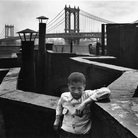 Dal 2 December 2025 al 19 February 2026
Milano | Centro Culturale di Milano
Dal 2 December 2025 al 19 February 2026
Milano | Centro Culturale di Milano
Walter Rosenblum. Il mondo e la tenerezza
-
 Dal 30 November 2025 al 12 April 2026
Gallarate | Museo MA*GA
Dal 30 November 2025 al 12 April 2026
Gallarate | Museo MA*GA
Kandinsky e l’Italia
-
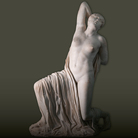 Dal 29 November 2025 al 12 April 2026
Roma | Musei Capitolini
Dal 29 November 2025 al 12 April 2026
Roma | Musei Capitolini
La Grecia a Roma
-
 Dal 22 November 2025 al 3 May 2026
Torino | Sale Chiablese dei Musei Reali
Dal 22 November 2025 al 3 May 2026
Torino | Sale Chiablese dei Musei Reali
Orazio Gentileschi. Un pittore in viaggio
-
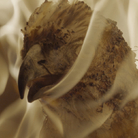 Dal 20 November 2025 al 25 January 2026
Firenze | Palazzo Strozzi
Dal 20 November 2025 al 25 January 2026
Firenze | Palazzo Strozzi
Andro Eradze. Bones of Tomorrow
-
 Dal 21 November 2025 al 28 March 2026
Cuneo | Complesso Monumentale di San Francesco
Dal 21 November 2025 al 28 March 2026
Cuneo | Complesso Monumentale di San Francesco
La Galleria Borghese. Da Raffaello a Bernini. Storia di una collezione
